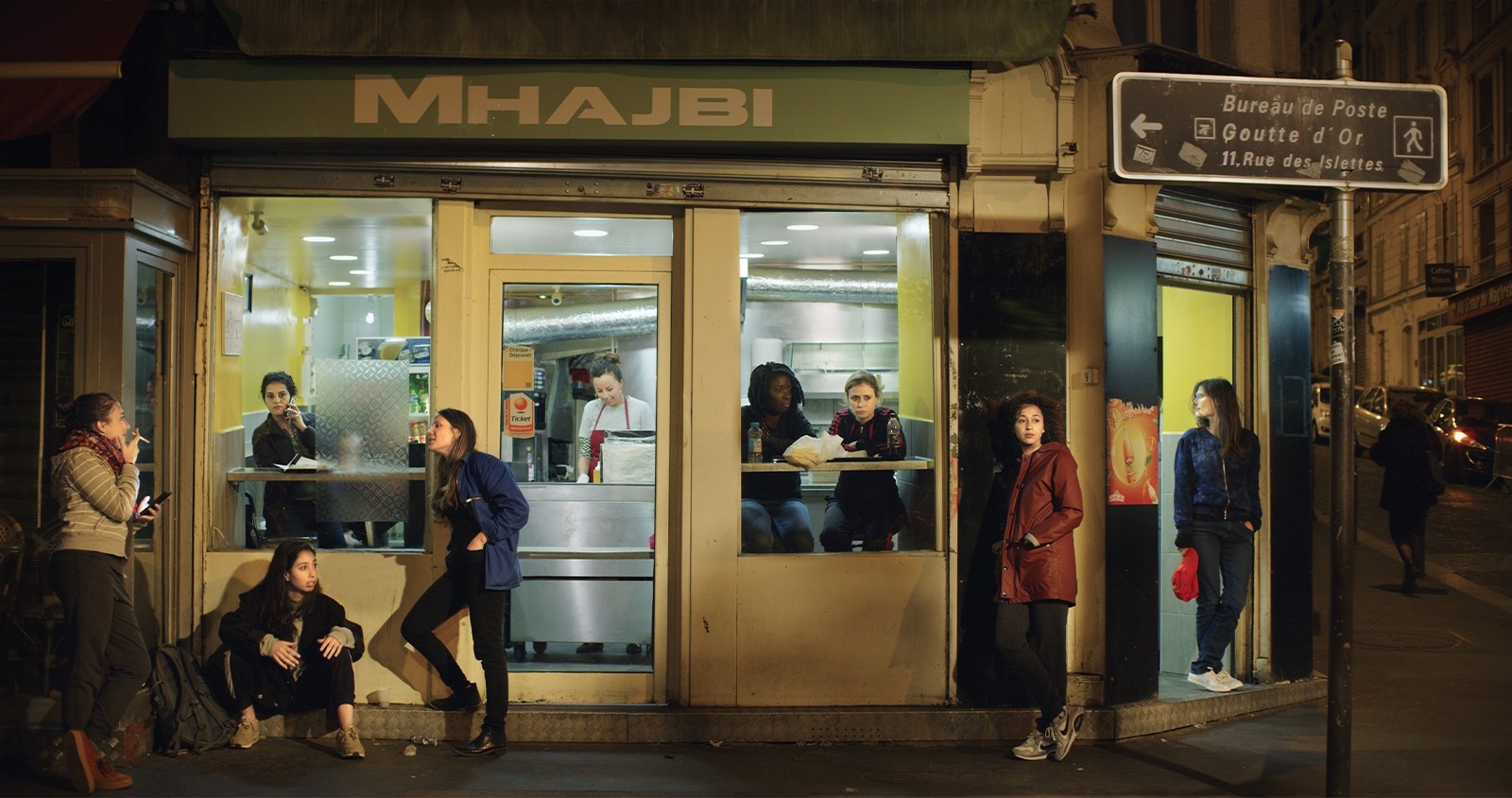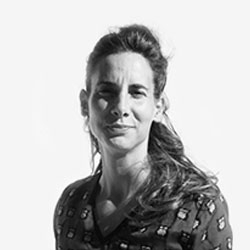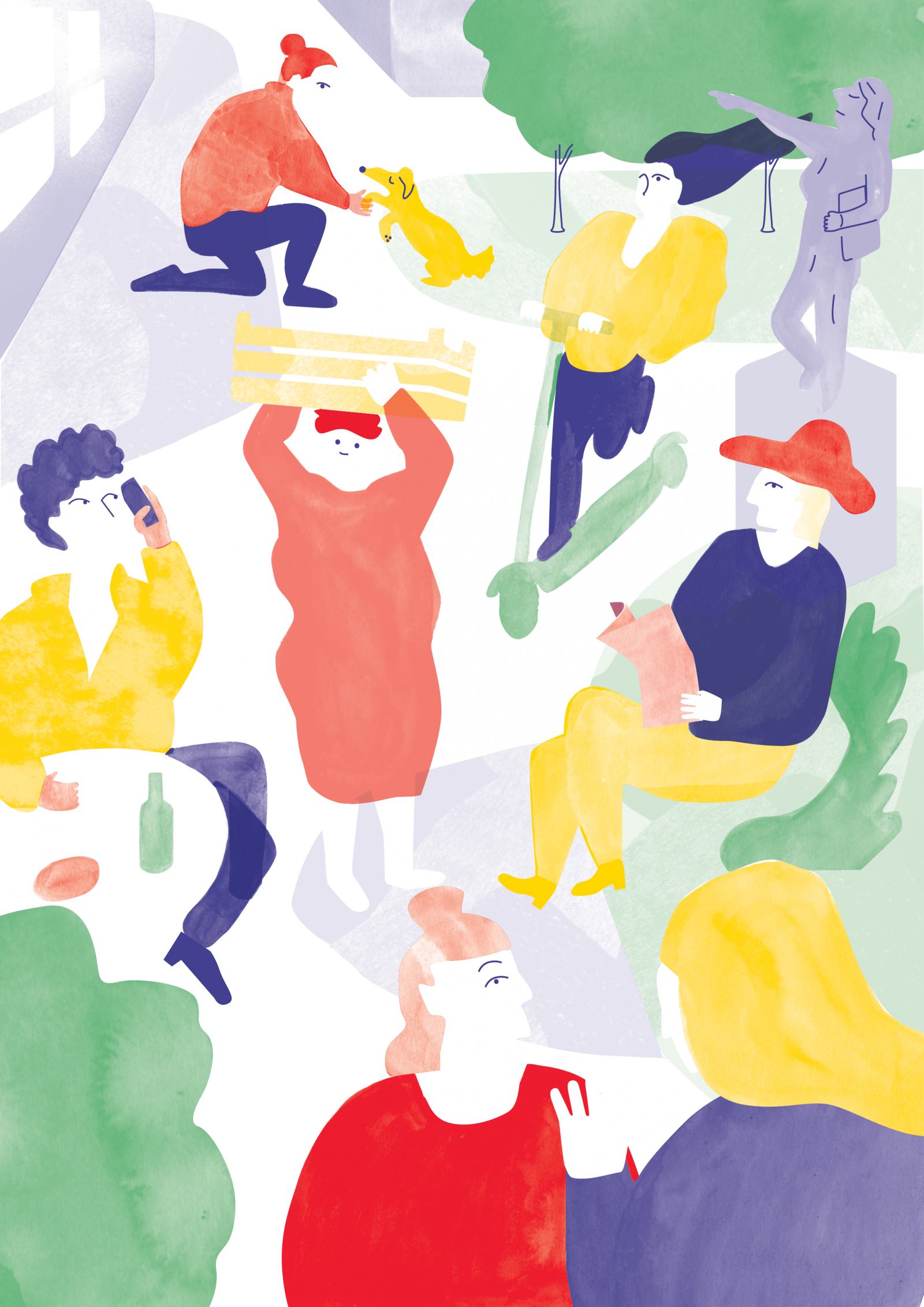The Desire Paths of Paris, a City Reinvented by Sensory Experience
The public spaces of a welcoming city must be an open book on diversity of the people living in it and shaping it. There is an urgency to act upon the hard spots of the city, the symbols of the male appropriation at the spatial or immaterial level, and in particular, on two types of Parisian spaces. These are, first, places where there is an extreme over-representation of men—in the metro, the RER regional express rail, railway stations after dark, and in certain areas during the daytime (Porte de Clignancourt or Barbès)—and, second, the sites of male heritage and patrimony—the great monuments such as the Pantheon, the Arc de Triomphe and its unknown soldiers, or the Louvre, the seat of royal authority. The collective Les MonumentalEs inscribed 200 female names on the street furniture of Place du Panthéon, showcasing an important way to get attitudes to change. In the face of these two urban situations of male appropriation, we suggest combining a dual temporality: visible high points intended for use—artistic commissions, participatory events, street theater performances, urban legends and celebrations, carnival, parades, etc.—and long-term actions with groups of female residents, to foster empowerment and formulate contextual responses to specific needs (insecurity or discomfort, for example).
In order for Paris to embody the city of everyday life and proximity, the means, confidence, and enjoyment required to wander around the city, without fear, must be present. This involves creating—on the basis of a diagnosis of the shortcomings at the city scale—reassuring beacons, safe havens at all times of the day and night, that are accessible throughout the city in less than a 10 min walk. These refuges would bring together resources for women to feel at ease in the public space and act as protective shelters lit up with reassuring lights (not necessarily white, with warm and bright colors), with power sockets to charge mobile phones, information outlets on women’s support services and women’s rights, etc. These beacons could be co-designed and co-constructed with groups of women in different places in the city—at subway exits for example, or in the intermediary spaces extending in front of residential units, between intimate and public, where the situation allows it (recessed constructions, underused frontage, hallway extensions onto the street…). These intermediary thresholds could be co-programmed with female urbanites and accommodate all sorts of uses that promote the appropriation of public space by women during the day and in the evenings (spaces dedicated to the sports practices of young girls, such as dance or Double Dutch skipping, street salons, along with fantasy and cooperative games).
For a Paris of surprise and senses, where we feel good, schemes that foster a fun, spontaneous appropriation of the city—understood as a place for free play and improvisation[15]—should be created. Respecting the overall harmony of the Haussmannian program and in continuity with the Parisian esthetic shaped over the course of time, these micro-facilities would be non-standardized creations, stimulating the imagination of the passers-by, changing their outlook on everyday life and going beyond stereotyped urban behaviors. Adapted to the various atmospheres of the city of Paris—the mineral, green, monumental, or working-class environments—these installations would be mindful of existing materials, while offering playfulness within the topography, interactive and immersive street furniture, water games, or multi-use sculptures. The sensory city is the city of pedestrians. It prioritizes the first few meters in front of buildings for active ground floors, with an attention to the textures of the feet of buildings, to the surface treatment chosen for forecourts and sidewalks, below the balconies (clad with ceramics for instance)… Finally, the sensory Paris is somewhere where the five senses guide the steps of the people strolling in the city. There are tactile itineraries, where our fingers and feet want to wander around (materials on walls, soft ground), listening itineraries, spheres of silence, and why not dream of aromatic itineraries and a city that could be relished, smell nice, and arouse our taste buds?
In the book "La beauté d'une ville" published by the Pavillon de l'Arsenal in 2021.










![“Parc Léon, Barb.s,” Les Intruses [Female Intruders] series, Randa Maroufi, 2019. Winning artwork of the City of Paris’ call for projects “Embelling Paris” [Beautifying Paris], produced by the Institut des Cultures d’Islam [Institute of Islamic Cultures) with the support of Emerige Mécénat. © Randa Maroufi](https://mag.pavillon-arsenal.com/data/b4s3_home/fiche/61/media-full_randa_a250d.jpg)
